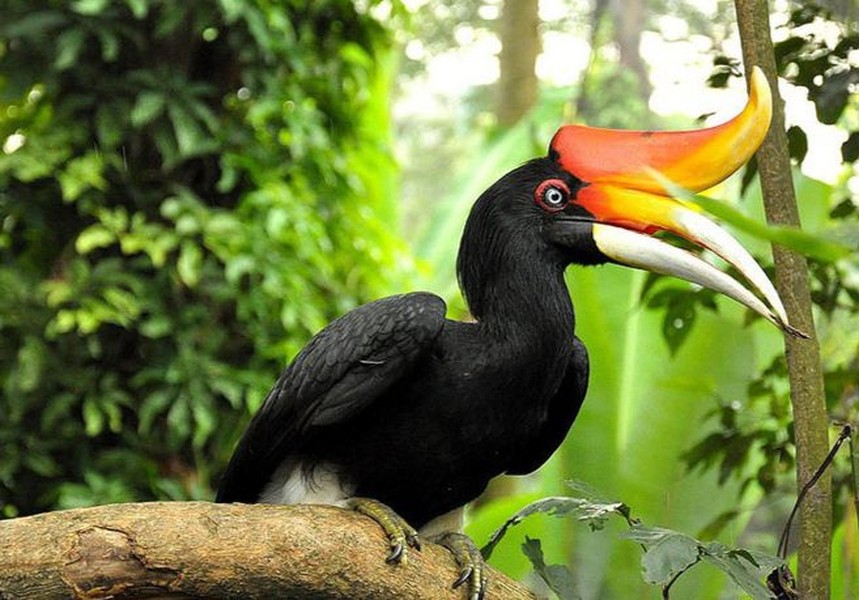Hornbills are a family of birds belonging to the order Bucerotiformes. They are characterized by their large, colorful beaks, which have a hollow, bony structure called a casque on top. Hornbills are found in tropical and subtropical forests in Africa and Asia. They are mostly frugivorous, but some species also eat insects, small mammals, and reptiles.
Distinctive Features
-
Casque: The casque is a prominent feature of hornbills and is thought to play a role in communication, courtship, and defense. The casque is made of keratin, the same material as human hair and nails.
-
Colorful Beaks: Hornbills have colorful beaks, which can be red, yellow, orange, or blue. The color of the beak can vary depending on the species and sex of the bird.
-
Hollow Beaks: The beaks of hornbills are hollow, which helps to reduce their weight. The hollow space in the beak may also help to amplify the bird’s calls.
Diet and Feeding
Hornbills are mostly frugivorous, meaning that they eat fruit. They use their large beaks to pluck fruit from trees and to break open fruits to get to the seeds. Some hornbills also eat insects, small mammals, and reptiles.
Nesting
Hornbills are cavity nesters, meaning that they nest in holes in trees. The female hornbill lays eggs in the nest and then seals herself in with mud and leaves. The male hornbill then feeds the female and the chicks through a small hole in the seal.
Communication
Hornbills communicate with each other using a variety of vocalizations, body language, and visual displays. The casque may also play a role in communication. For example, some hornbills bob their heads and swing their beaks back and forth when they are communicating with each other.
Social Behavior
Hornbills are social birds and can be found in pairs, family groups, or flocks. Some species of hornbills are cooperative breeders, meaning that multiple individuals help to raise the chicks.
Threats and Conservation
Hornbills are threatened by habitat loss, hunting, and the illegal wildlife trade. Some species of hornbills are classified as Endangered or Critically Endangered by the IUCN.
Conservation Efforts
There are a number of conservation efforts underway to protect hornbills. These efforts include habitat conservation, education programs, and law enforcement.
The Hornbill: A Bird Worth Protecting
Hornbills are fascinating birds with a unique appearance and behavior. They are an important part of the ecosystems in which they live and play a vital role in seed dispersal. We must all do our part to protect these amazing birds and ensure that they continue to thrive for generations to come.
In addition to the information above, here are some additional facts about hornbills:
- The largest hornbill species is the great hornbill (Buceros bicornis), which can grow up to 1.2 meters (4 feet) in length and weigh up to 2.2 kilograms (5 pounds).
- The smallest hornbill species is the dwarf hornbill (Tropicranius minor), which is only about 15 centimeters (6 inches) in length and weighs about 80 grams (3 ounces).
- Hornbills are found in 27 different countries in Africa and Asia.
- There are 67 different species of hornbills.
I hope you learned something new about hornbills! If you have any other questions, please feel free to ask.






